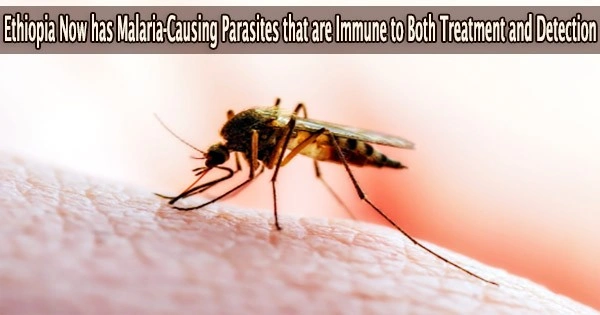A development that could increase malaria cases and deaths and make eradicating the chronic disease even more difficult has been made known by scientists: new strains of the parasites that cause malaria that are both resistant to current treatments and escape detection by common diagnostic tests have been found in Ethiopia.
In Nature Microbiology, the scientists described the results of a genomic monitoring investigation. Already, scientists had found in Uganda, Tanzania and Rwanda strains of the parasite that causes malaria that were resistant to most available antimalarial drugs; and separately, malaria parasites resistant to diagnostic tests had emerged in the Horn of Africa.
Those parasites have been spreading separately, but according to study author Jeffrey Bailey, an associate professor of translational research, pathology, and laboratory medicine at Brown University, this is the first published report to confirm the prevalence of this kind of double-resistant malaria strain.
“Now we’re essentially seeing the worst-case scenario: parasites with the mutation that make them resistant to treatment have also picked up the chromosomal deletions that make them invisible to the diagnostic tests,” Bailey said. “This means that it will be harder to detect people who are infected, and then when infected people are treated with antimalarial drugs, that may not work to stop them from spreading the disease.”
Rapid diagnostic tests that identify highly expressed particular parasite proteins in the blood are the typical way to diagnose malaria in Africa. The tests can confirm malaria even if the patient is asymptomatic. The parasites lacking the genes for these proteins have evolved to be invisible to the tests.
Now we’re essentially seeing the worst-case scenario: parasites with the mutation that make them resistant to treatment have also picked up the chromosomal deletions that make them invisible to the diagnostic tests. This means that it will be harder to detect people who are infected, and then when infected people are treated with antimalarial drugs, that may not work to stop them from spreading the disease.
Jeffrey Bailey
A combination therapy with artemisinin-based pharmacological compounds is the first-line malaria treatment advised by the World Health Organization (WHO) and is frequently extremely effective in preventing death and minimizing transmission. The mutations now detected in Africa provide resistance to artemisinin.
Bailey’s research team at Brown, in close collaboration with the researchers from the Ethiopian Public Health Institute and the University of North Carolina at Chapel Hill, conducted a comparative genomic analysis of malaria-parasite samples with the deleted protein-expressinggenes that had been collected across three regions of Ethiopia.
Led by Bailey, co-director of the Ph.D. program at Brown’s Center for Computational Molecular Biology, the scientists used molecular sequencing to assess the prevalence of mutations that confer resistance to artemisinin. Abebe Fola, a postdoctoral researcher in Bailey’s lab, was instrumental in this work and is the first author of the paper.
They discovered that 8.2% of drug-resistant parasites also had the gene deletions that allowed the diagnostic tests to identify them as being protein-expressing parasites.
Although there is a low overall incidence of malaria in Ethiopia, it is nevertheless prevalent across 75% of the nation, putting 65% of the population at risk. Each year, there are more than 5 million cases of malaria.
The Ethiopian government established a target for the eradication of malaria by 2030, and a key component of the campaign to do so is timely identification and treatment with potent medications.
“The spread of these parasites will certainly make eliminating malaria in Ethiopia and elsewhere in Africa more difficult and will likely lead to increased cases and deaths,” Bailey said.
The researchers came to the conclusion that close monitoring of the spread of parasites that are both drug- and diagnostic-resistant is required. They also noted that the success of future malaria control and elimination initiatives in Africa depends on having a better understanding of how these mutations emerge, interact, and spread.
In addition, Bailey said, “there is an urgent need to develop new therapies, in addition to artemisinin, to treat malaria as well as vaccines to prevent and slow the spread of the disease.”
“The ability to conduct genomic surveillance to monitor mutations while looking for new ones has greatly advanced over the last decade,” Bailey said, “with the emergence and refinement of next-generation sequencing. His lab at Brown has pioneered high-throughput techniques to sequence many genes at once, and has been collaborating on projects like the current study with research teams at other universities as well as health agencies in countries such as Uganda.”
While the analysis for this study was conducted at Brown, Bailey and others on the research team are working on building the capacity for genomic surveillance in Ethiopia and other parts of Africa.
















